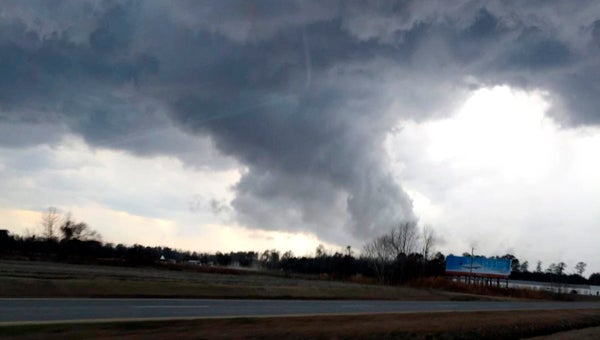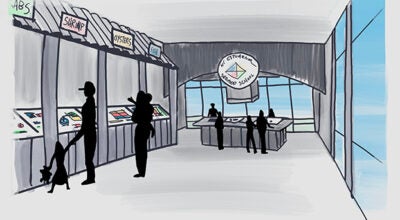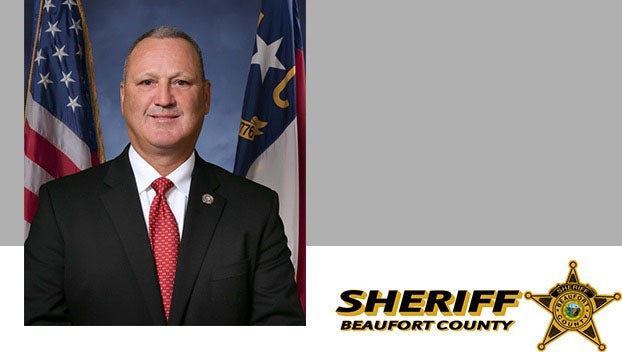County signs on to proactive approach to hazardous weather
Published 10:46 pm Friday, April 29, 2016

GERMAN LLODRAT
SEVERE WEATHER: April, May and June can produce eastern North Carolina’s most severe weather, such as this thunderstorm and tornado photographed in May of 2014 off of U.S. Highway 264 West between Washington in Greenville.
Beaufort County is stepping up its level of storm preparedness by becoming National Weather Service StormReady certified, and is seeking storm spotters countywide as part of that effort.
“StormReady is a grassroots approach to help communities plan ahead for severe weather events,” said Lisa Respess Williams, disaster specialist with Beaufort County Emergency Services.
To be recognized as StormReady, a county must maintain a 24-hour warning point and emergency operations center; have more than one way to receive National Weather Service warnings and to alert the public; be able to monitor local weather and flood conditions; conduct community preparedness programs; and ensure hazardous weather and flooding are addressed in formal emergency management plans, according to a press release from NWS.
The designation also requires the help of the public — people willing to take a SKYWARN class to train as storm spotters, then use that knowledge to identify and describe severe local weather to the National Weather Service.
Warning Coordination Meteorologist John Cole will be teaching a SKYWARN weather spotting class to volunteers on May 11 at the county’s Emergency Operations Center. The course, which Cole teaches about 10 times a year, covers a wide variety of topics, including thunderstorm types, squall lines, identifying cumulonimbus clouds and super-cell thunderstorms, lightning, weather hazard safety and more.
“It’s the various forms of severe weather and what type of storms are associated with them,” Cole said.
Radar can detect precipitation, wind speed and even tornadoes, but it’s not perfect, Cole said, which is why community feedback through observation on the ground is sought.
“We need eyes out there to let us know what’s going on,” he said.
Cole said amateur radio operators make great storm spotter candidates, as they can relay NWS warnings to others in the field, as well as relay reports back from the field to the NWS Newport office.
“There are a fair amount of SKYWARN spotters out there reporting,” Cole said. “We have about a thousand SKYWARN spotters over 15 counties.”
Williams is hoping to add more to that roster.
“Retired military people love this; retired science teachers love this,” Williams said. “We are a county divided by a river, so I’m hoping to get a response from people on all sides (of the county).”
Each year, NWS shows its appreciation for its weather spotters nationwide with a SKYWARN Recognition Day — in Newport, NWS employees invite all their spotters to the facility for an all-day event, Cole said.
Upon completion of the two-hour SKYWARN training, new weather spotters are given an 800-number to call to report their weather experiences. Cole said this time of year can be severe-weather heavy, and the reports from spotters allow NWS to follow up on the severe-weather warnings the agency issues.
“We are getting into severe weather season now, we’re starting to warm up and May is in part known as a month where we do have tornadoes — actually, April, May and June. … We’re in that season now and people need to be aware that the weather can go bad, real quick,” Cole said. “This is the season where people really need to have a plan of action, in case we do issue a warning. … (They need to) know where to go, because seconds really do count.”
While Beaufort County was already 90 percent in compliance with StormReady certification, Williams said the additional step will help emergency management, and residents, be better prepared in the case of severe weather strikes. Approximately 98 percent of all presidentially declared disasters are weather-related, leading to around 500 deaths per year and nearly $15 billion in damage, according to the National Weather Service website.
“By Beaufort County being designated StormReady, we want to do everything possible to prevent any of those 500 deaths from being in Beaufort County,” Williams said.
The SKYWARN class will meet from 9 a.m. to 11 a.m. on May 11 at the EOC, 1420 Highland Drive. Those who wish to attend can register by calling 252-946-2046. For those who are unable to attend the local training, Cole said a free web-based SKYWARN training class, COMET SKYWARN, can be found at weather.gov/rah/rahcomet, which he will accept as certification in lieu of the May seminar.





